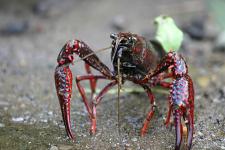Increasingly similar or different? Centuries-long analysis suggests biodiversity is differentiating and homogenising to a comparable extent

Findings counter a pervasive expectation in the scientific community
"We wanted to examine the idea that homogenisation is a defining characteristic of the biodiversity crisis", first author Dr Shane Blowes of iDiv and MLU says. "By combining a classic measure of scale-dependent biodiversity change with an unprecedented collation of data, we found that it is equally likely for communities to become more different through time in response to ongoing human impacts on the environment".
No change means more than you think
The analysis integrated measures of change in the number of different species (species richness) present in a single site with changes occurring across multiple sites combined within a landscape or geographical region. This allowed the researchers to determine whether species composition was becoming more similar or different across sites.
They found no change in the spatial variation of species composition was the most common outcome. This was despite many instances of homogenisation and differentiation among communities over time. In fact, net trends in biodiversity change across scales were so weak that they were often indistinguishable from zero.
The data also showed a weak homogenising trend across larger regions over many hundreds of years due to increased numbers of widespread species in communities; however, this trend was balanced by the differentiation of communities at smaller scales. These findings were consistent across many life forms, from fish to birds to plants and mammals.
Studies on biodiversity change paint a complex picture, and researchers are often of two minds about how species’ responses to human-driven changes should be characterised. However, the concept of homogenisation remains a pervasive expectation in the scientific community and the wider public.
"Our analysis exposes the complexity of the issue", Professor Jonathan Chase, senior author of the study and professor at iDiv and MLU, explains. "It doesn’t mean severe changes aren’t happening in the world; it means we need to move beyond a belief that homogenisation is the main way biodiversity is changing".
Patterns for multiscale conservation
The researchers also present scenarios in their study that characterise changes in species occupancy: homogenisation is largely driven by increases in the average occupancy, whereas differentiation is driven by decreases in the average occupancy.
The scenarios make clear that even small changes in occupancy - due to landscape fragmentation via manmade roads or fences, the introduction of plants and animals to areas beyond their historic boundaries, and climate change, which can drive species to shift their range - can tip a community toward either homogenisation or differentiation.
The bright red Louisiana crawfish (Procambarus clarkii), which is native to northern Mexico and the southeastern United States, is an example of an introduced species that is flourishing in Germany’s freshwaters, driving homogenisation.
"We are seeing more and more that many threatened species require protection across multiple sites or at landscape scales to be effective", Blowes adds. "A simple framework can help biodiversity management and conservation move to the multiscale approach needed to understand biodiversity change fully".
Study: Blowes S.A. et al. Synthesis reveals approximately balanced biotic differentiation and homogenization. Science Advances (2024). doi: 10.1126/sciadv.adj9395

